Table of Contents
Arc welding, the cornerstone of fabrication, crafting, and construction, merges metals via an electric arc. In this article, uncover What is Arc Welding explore its types, inner workings, applications, and the impactful advantages it holds. Delve into the sparks binding metal, revealing the power behind this essential technique.
Gaining Knowledge of Arc Welding
Definition and Core Principles
Arc welding, at its core, is a fusion welding process that employs an electric arc to melt and join metals. The process involves the use of a welding power supply to create an electric arc between an electrode and the base material. This intense heat generated by the arc causes the metals to melt, forming a molten pool that cools and solidifies, creating a strong joint.
Core Principles:
- Electric Arc: The pivotal element in arc welding, this arc generates temperatures high enough to melt metals.
- Electrode: Serves as a conductor, transmitting the electric current from the power supply to the workpiece.
- Base Material: The primary metal being welded, forming the joint.
How Arc Welding Works
Arc welding operates on the principle of creating an electrical circuit by establishing a path for the current flow. The power supply produces the necessary voltage and current to sustain the arc between the electrode and the base material. As the electrode tip approaches the workpiece, the voltage difference ionizes the air, forming the arc. This arc produces extreme temperatures, melting the electrode and the workpiece, which subsequently fuse upon cooling.
AC vs. DC Currents:
- Alternating Current (AC): Reverses direction periodically, suitable for certain applications.
- Direct Current (DC): Flows in a single direction, providing stable arcs and better control.
Types of Arc Welding
1. Consumable Electrode Methods
Consumable electrode methods involve using an electrode that also acts as a filler material during the welding process.
- Metal Inert Gas (MIG) and Metal Active Gas (MAG) Welding: Utilizes a continuously fed wire electrode and shielding gas to protect the weld pool. MIG uses inert gases like argon or helium, while MAG employs active gases like carbon dioxide.
- Shielded Metal Arc Welding (SMAW): Commonly known as stick welding, SMAW uses a flux-coated electrode. As the electrode melts, the flux forms a protective gas shield, ensuring the integrity of the weld.
- Flux-Cored Arc Welding (FCAW): Similar to MIG/MAG, FCAW uses a tubular wire filled with flux. This flux creates a protective shield, allowing welding in various conditions, including windy environments.
- Submerged Arc Welding (SAW): Involves a granular flux covering the welding area, creating a blanket that shields the arc. Ideal for high-speed welding on thick materials.
- Electro-Slag Welding (ESW): A method primarily used for vertical welding of thick plates, where the arc is maintained between the electrode and the workpiece submerged in flux.
- Arc Stud Welding (SW): Joins studs to a base metal by creating an arc between the stud and the workpiece surface.
2. Non-Consumable Electrode Methods
These methods utilize a separate non-melting electrode and require an external filler material if necessary.
- Tungsten Inert Gas (TIG) Welding: Uses a non-consumable tungsten electrode and a separate filler material if needed. The weld area is protected by an inert gas, ensuring a clean weld without spatter.
- Plasma Arc Welding (PAW): Similar to TIG, but with a more focused arc using a constricted plasma arc. Offers precise control and is suitable for intricate welding.
3. Other Variants
Beyond the commonly known methods, there exist several specialized variants in arc welding, each designed for specific applications and material types.
- Carbon Arc Welding: Utilizes the heat of a carbon arc between the base metal and a carbon electrode to join metals.
- Atomic Hydrogen Welding: Employs hydrogen gas as a shielding medium and the intense heat from an electric arc to weld.
- Drawn Arc (DA) Stud Welding: Involves creating an arc between the base metal and a drawn arc stud, producing welds on thin materials or studs onto a workpiece.
Understanding the diverse methods within arc welding provides insights into the specific applications, advantages, and limitations of each, empowering welders to choose the most suitable technique for various projects.
Processes and Engineering in Arc Welding
1. TIG Welding in Detail
Tungsten Inert Gas (TG) wIelding stands out for its precision and versatility. Key aspects include:
- Equipment: A TIG welding setup typically includes a power source, a non-consumable tungsten electrode, a shielding gas supply (usually argon or helium), and, optionally, a filler material.
- Shielding Gas: Inert gases prevent atmospheric contamination, ensuring a clean weld. The gas is carefully chosen based on the material being welded.
- Applications: TIG welding is favored for thin materials, critical joints, and intricate work, especially in aerospace, automotive, and artistry due to its precise control and high-quality results.
2. MIG/MAG Welding in Detail
Metal Inert Gas (MIG) and Metal Active Gas (MAG) welding share similarities but differ in the shielding gases used:
- Setup: Both utilize a continuous wire electrode, but MIG uses inert gases (argon or helium), while MAG employs active gases (such as carbon dioxide or a mixture).
- Advantages: MIG/MAG welding offers high deposition rates, making it efficient for high-volume production. It’s commonly used in automotive manufacturing, construction, and fabrication.
- Applications: Suitable for thicker materials and high-speed welding due to its continuous wire feed and adaptability to various environments.
3. Manual Metal Arc (MMA) Welding
Also known as Shielded Metal Arc Welding (SMAW) or stick welding, MMA welding is one of the most versatile and widely used methods.
- Process: It involves a flux-coated electrode that creates its shielding gas as it melts, protecting the weld pool from atmospheric contamination.
- Versatility: MMA welding is adaptable to various materials, positions, and environments, making it suitable for construction, maintenance, and repair work.
Applications and Usage
1. Where Arc Welding Is Commonly Applied
Arc welding finds extensive use across various industries and applications due to its versatility and effectiveness.
- Construction and Fabrication: Building structures, bridges, and pipelines often rely on arc welding for its ability to join metal components securely.
- Automotive Industry: From vehicle assembly to repairs, arc welding, particularly MIG/MAG welding, plays a pivotal role in constructing car frames, exhaust systems, and other components.
- Aerospace and Marine: TIG welding is prevalent in these industries for its precision and ability to weld lightweight materials like aluminum and titanium.
- Artistic Endeavors: Sculptors, metal artists, and craftsmen utilize arc welding techniques to create intricate designs and sculptures.
2. Different Rod Types for Various Applications
The choice of welding rod or electrode type significantly impacts the welding process and the quality of the final weld.
- Electrode Composition: Different electrodes are crafted with specific materials and coatings suitable for welding various metals, ensuring optimal performance and quality.
- Specific Applications: For instance, electrodes with specific coatings may be preferred for welding certain alloys, providing better mechanical properties or corrosion resistance.
Advantages and Disadvantages
1. Advantages of Arc Welding
- Versatility: Arc welding techniques can be applied to various metals, thicknesses, and joint configurations.
- Portability: Many arc welding methods, especially stick welding, are portable and can be used in diverse work environments.
- Cost-Effectiveness: Arc welding equipment is relatively affordable and adaptable for different project scales.
- Control and Precision: Techniques like TIG welding offer precise control over the welding process, resulting in high-quality, clean welds.
2. Disadvantages of Arc Welding
- Skill-Intensive: Achieving optimal results often requires skill and experience, particularly in controlling heat input and welding parameters.
- Welding Environment: Some methods, like MIG/MAG, can be sensitive to wind and atmospheric conditions, affecting the quality of the weld.
- Post-Weld Cleaning: Certain methods may leave slag or spatter that requires additional cleaning or finishing.
- Safety Concerns: Arc welding involves exposure to high temperatures, UV radiation, and fumes, requiring appropriate safety measures.
Conclusion: Summary of Arc Welding Essentials
Arc welding stands as a foundational process in metal fabrication, offering a diverse array of techniques and applications. This article has explored the fundamental principles, various methods, engineering aspects, applications, and pros/cons of arc welding.
- Key Takeaways: Arc welding involves the use of an electric arc to join metals, with methods ranging from MIG/MAG to TIG, each suited for specific applications and materials. Advantages include versatility and cost-effectiveness, balanced by challenges such as skill requirements and safety concerns.
2. Additional Resources for Learning More about Welding
For those eager to delve deeper into the world of welding and expand their expertise, there are numerous avenues for further learning:
- Training Programs: Consider enrolling in accredited welding courses or vocational training programs offered by technical schools or community colleges.
- Online Resources: Explore online platforms, forums, and tutorials dedicated to welding techniques, tips, and discussions.
- Certifications and Workshops: Pursue industry certifications or attend workshops conducted by seasoned professionals to gain hands-on experience and insights.
- Books and Publications: Delve into welding manuals, textbooks, and industry publications that offer in-depth knowledge and guidance.
Continued learning and practical experience are key to mastering arc welding techniques and staying updated with advancements in materials, equipment, and methodologies.
By summarizing the core concepts and encouraging further exploration, this article aims to equip readers with foundational knowledge and inspire them to pursue continuous learning in the field of arc welding.
FAQs about What is Arc Welding
Is arc welding suitable for all types of metals?
Arc welding is versatile and can be used with various metals like steel, aluminum, and stainless steel, among others.
What safety precautions should one take during arc welding?
Always wear protective gear, ensure proper ventilation, and follow safety guidelines to prevent hazards.
Are there different types of arc welding processes?
Yes, there are various methods like stick welding, MIG (Metal Inert Gas) welding, and TIG (Tungsten Inert Gas) welding, each suited for different applications.
How can one learn arc welding?
Many vocational schools, community colleges, and welding institutes offer courses and training programs for learning arc welding.
What is the future of arc welding technology?
The future holds innovations in automation, robotics, and environmentally sustainable practices, shaping a more efficient and advanced landscape for arc welding.


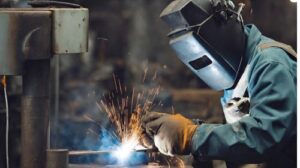
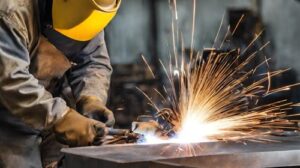

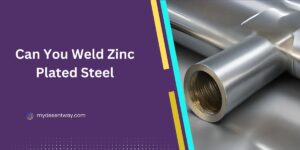

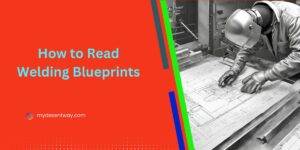
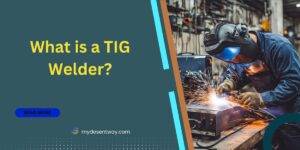

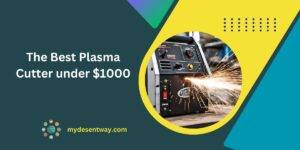

10 thoughts on “What is Arc Welding?”